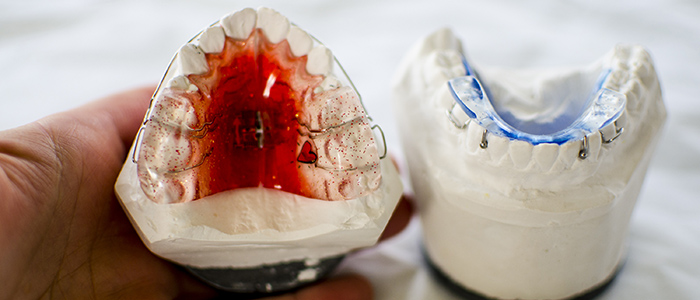Factors that affect the treatment result of TwinBlock treatment

How often does a removable brace need to be checked by the dentist and how much does a patient need to use it to get the desired effect? Can digital microsensors in braces help optimize wear time?
COO's role in the project
Project leader
Project Start
Ethics tested 2017,
started up during 2018
Projektpartner
Faculty of Odontology, Malmö University
Funding
Futurum, Region Jönköping County
Project leader
Anders Magnusson,
Consultant orthodontist, Medical Doctor, Department of Orthodontics, Institute for Postgraduate Dental Education, Region Jönköping County.
Projektmedlemmar
Erik Frilund, Specialist Dentist, Institute for Postgraduate Dental Education Region Jönköping County Public Dental Healthcare Services.
Mikael Sonesson, Consultant Orthodontist, DDS, Faculty of Odontology Malmö University.
Previous or related publications
Purpose and goal
By recording the usage time of a removable Twinblock brace, we want to evaluate how the 24-hour usage time, the patient's age at the start of treatment, the extent of the bite deviation and the intervals at the dental check-ups affect the outcome of the treatment. The recording of the usage time is done using a digital electronic microsensor (Theramon).
In the past there have not been the conditions to objectively investigate these variables, but with new technology it is possible. The goal of the project is to optimize the treatment with removable braces.
Challenges
Getting patients to follow given advice is often a challenge for the practitioner. This is a common problem in treatment with removable braces, as the treatment is dependent on the patient's cooperation and requires regular use according to the guidelines given by the practitioner. Frequent check-ups with the dentist are also required to see how the treatment is progressing and if any adjustments are needed.
If the patient does not follow the advice and instructions, it can result in the treatment taking a longer time, being more difficult to carry out and giving a worse result. It also becomes more expensive – both for the patient and for society to complete the treatment.
Solution
With today's technology, we can now measure the usage time correctly and objectively. In the braces, a digital sensor (TheraMon) is folded into the acrylic, which is read wirelessly every time the patient goes to the dentist.
The sensor measures the ambient temperature every 15 minutes and can thus determine when the braces are being used by the patient. This method gives us the opportunity to get answers to how the usage time affects the treatment result.
The patients in the study are also divided into two groups with different call intervals, which enables an assessment of how the control intervals affect the usage time.
Effect
Orthodontic treatment with removable orthodontic appliances is a costly treatment and often takes a long time. When the removable braces are used as prescribed, good results can be achieved at a low cost, compared to treatment with fixed braces.
If the course of treatment can be optimized, the outcome of the treatment becomes more predictable. It should lead to cost savings for both the individual and society.


